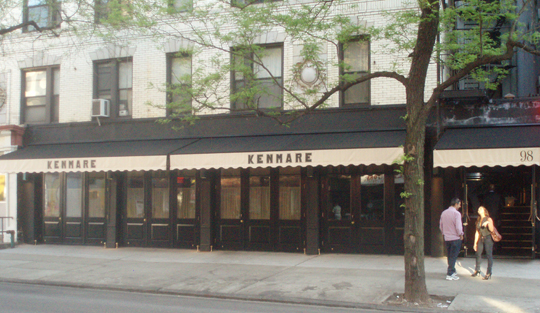Lincoln Ristorante
 Tuesday, November 1, 2011 at 03:39PM
Tuesday, November 1, 2011 at 03:39PM 
 I’ve dined at Lincoln Ristorante several times since it opened a year ago. It is not my favorite Lincoln Center restaurant, but it is certainly the most convenient, and it is very good.
I’ve dined at Lincoln Ristorante several times since it opened a year ago. It is not my favorite Lincoln Center restaurant, but it is certainly the most convenient, and it is very good.
I just wish I liked it better. I want to like it better. People I respect like it better. But it usually leaves me wanting more.
Lincoln opened with the proverbial thud, getting lukewarm reviews from most of the city’s critics. I had a long list of complaints in my original review, and I stand by most of them. Lincoln is too corporate: it screams of design by committee. The room and the building are unattractive. These things are unfixable.
 What Chef Jonathan Benno and Restaurant Director Paolo Novello have done, is to fix what they can. Lincoln is not bargain dining, but prices now are a shade lower. An expensive tasting menu and an absurd $130 ribeye are no longer offered. Portion sizes, which for some dishes were insultingly small, have been increased.
What Chef Jonathan Benno and Restaurant Director Paolo Novello have done, is to fix what they can. Lincoln is not bargain dining, but prices now are a shade lower. An expensive tasting menu and an absurd $130 ribeye are no longer offered. Portion sizes, which for some dishes were insultingly small, have been increased.
Benno has found his inside voice. Though I am not fond of the open kitchen, at least you no longer hear a drill sergeant commanding the Normandy invasion. We sat right next to the glass partition at dinner a couple of weeks ago, and I don’t think we heard him once. What a relief!
Service, which was already excellent, has continued to improve. The staff know they need to get you to your show on time—all of my visits have been pre-concert or pre-opera—and they do it well, without ever seeming to be in a rush. Ask about any item, and a clear, patient, encyclopedic explanation will follow.
On the current menu, antipasti are $17–25, pastas $20–28, entrées $30–45, side dishes $10–15, and desserts $10–12. A traditional four-course Italian meal will thus set you back around $90 to $100 a head before wine, but I seldom eat that much before a show, and I am probably not alone. Indeed, the staff actively suggest that pasta dishes be ordered as mains or in half-portions.


We shared the Reginette Verdi al Ragú Bolognese ($24; above left), which the kitchen divided and served in separate bowls. This was one of the more enjoyable pastas I’ve had in quite a while. The reginette is a fascinating noodle, shaped like a long, thin, green zipper. The ragú was a rich mix of veal, pork, and beef, topped with just the right kick from parmigiano-reggiano.
 But Halibut ($36; above right) was on the dry side. It was served over excessively salty lentils baked in chicken stock and pig trotters, but I couldn’t taste those ingredients. This seems to be my fate at Lincoln, where the wonderful dishes are offset by the less successful ones.
But Halibut ($36; above right) was on the dry side. It was served over excessively salty lentils baked in chicken stock and pig trotters, but I couldn’t taste those ingredients. This seems to be my fate at Lincoln, where the wonderful dishes are offset by the less successful ones.
With the petits fours (right) there’s no argument. They may not be the fanciest, but they are more than sufficient.
So that’s the status of Lincoln circa late 2011. The professional reviews have started to improve. Esquire’s John Marianai called it one of the best new restaurants of the year. Gael Greene in Crain’s recently gave it “three hats” out of four, noting, “It is thrilling to watch a shy, insecure adolescent grow into a magnetic, irresistible beauty.”
But even allowing a year for Lincoln to improve, the Post’s Steve Cuozzo could only give it two stars recently, just slightly better than his 1½ stars a year ago.
I’m with Cuozzo. I very much want to like it better, but still cannot.
Lincoln (142 West 65th Street at Lincoln Center)
Food: **
Service: ***
Ambiance: **
Overall: **























